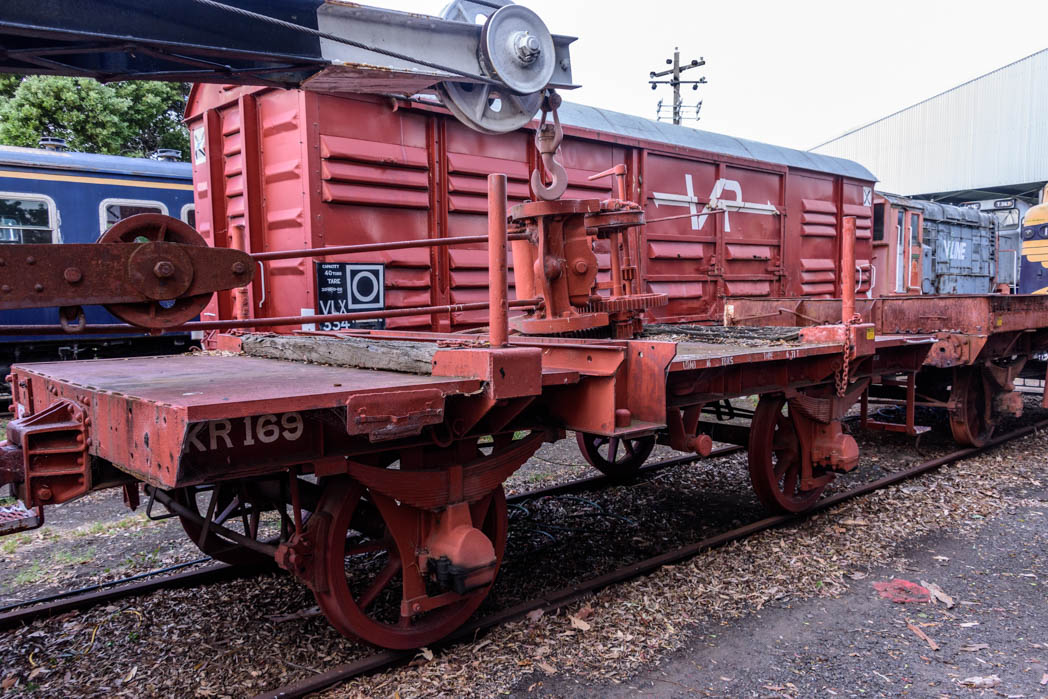
Constructed at Newport Workshops in 1893. Modifed to use automatic coupler, but unusually retained buffers which are not required for auto couplers.
Used in Race Service from 1935, and retired in 1962.
In use as maintenance equipment storage for Museum volunteers.
Photo by Andrew Henderson

Built at Newport Workshops in 1897. Used as a maintenance van for electrical overhead equipment from 1918 onwards and retired on 1974.
Retains coupling hook for 3-link coupling.
Photo by Andrew Henderson

Constructed in 1905 as an IA open wagon, modified and renumbered to HR 75 in 1956 to carry one Tait or Y Class Diesel bogie between Jolimont Workshop and Bendigo Workshop, where they could be inspected and repaired.
Modified again in 1986 and renumbered to HZL 211M, to carry one completed Comeng suburban electric bogie from Bendigo Workshop to the Commonwealth Engineering factory in Dandenong for fitting to the carriages under construction.
Photo by Andrew Henderson

Constructed in 1890 by a private builder in Spottiswoode (now Spotswood), one of many constructed by a number of independant builders.
Used for all kinds of traffic that could be carried in an open wagon.
Wagon passed to Way and Works Branch in the early 1940s and was used for maintenance until 1968.
Uses early 3-link coupling mechanism.
Photo by Andrew Henderson

Photo by Andrew Henderson

Constructed at Newport Workshops in 1924.
3000 Gallon capacity.
Removed from service in 1978.

Photo by Andrew Henderson
Constructed in 1954 at Newport Workshops as 114VP.
114VP was used on the Standard Gauge line to NSW after 1962, and recoded VLPY in 1980.
Retired from service by 1990.
These vans were used for all kinds of traffic including fruit and vegetables, newspapers, palletised goods etc.
Constructed at Newport Workshops in 1966 and retired by the mid-1990s.
These vans were used for all kinds of traffic including fruit and vegetables, newspapers, palletised goods etc.







